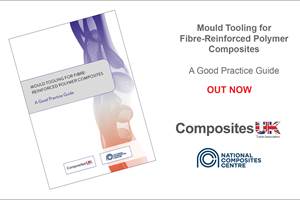Boeing completes milestone for Commercial Crew system
Boeing has completed the Certification Baseline Review for its CST-100 spacecraft under NASA's Commercial Crew Transportation Capability (CCtCap) contract.
Share
NASA reported on Dec. 1 that it has approved the completion of Boeing’s (Chicago, IL, US) first milestone in the company’s path toward launching crews to the International Space Station (ISS) from the United States under the Commercial Crew Transportation Capability (CCtCap) contract.
The Certification Baseline Review is the first of many more milestones, including flight tests from Florida’s Space Coast, that will establish the basis for certifying Boeing’s human space transportation system to carry NASA astronauts to ISS. The review established a baseline design of the Crew Space Transportation (CST)-100 spacecraft, United Launch Alliance Atlas V rocket, and associated ground and mission operations systems.
“The work done now is crucial to each of the future steps in the path to certification, including a flight test to the International Space Station,” says Kathy Lueders, manager of NASA’s Commercial Crew Program. “This first milestone establishes an expected operating rhythm for NASA and Boeing to meet our certification goal.”
On Sept. 16, the agency unveiled its selection of Boeing and SpaceX (Hawthorne, CA, US) to transport U.S. crews to and from the space station using its CST-100 and Crew Dragon spacecraft, respectively. These contracts will provide U.S. missions to the station, ending the nation’s sole reliance on Russia and allowing the station’s current crew of six to grow, enabling more research aboard the unique microgravity laboratory.
The CCtCap contracts are designed for the companies to complete NASA certification of their human space transportation systems, including a crewed flight test with at least one NASA astronaut aboard to verify the fully integrated rocket and spacecraft system can launch from the United States, maneuver in orbit and dock to the space station, as well as validate all its systems perform as expected. Once the test program has been completed successfully and the systems achieve NASA certification, the contractors will conduct at least two, and as many as six, crewed missions to the space station. The spacecraft also will serve as a lifeboat for astronauts aboard the station.
During the review, Boeing provided NASA with a roadmap toward certification, including its baseline design, concept of operations and management and insight plans. The Boeing team also detailed how the CST-100 would connect with the station and how it plans to train NASA astronauts to fly the CST-100 in orbit.
“It’s important for us to set a robust plan for achieving certification upfront,” says Boeing Commercial Crew program manager John Mulholland. “It’s crucial for us to achieve our 2017 goal, and the plan we’ve put in place will get us there.”
By expanding the crew size and enabling private companies to handle launches to low-Earth orbit — a region NASA has been visiting since 1962 — the nation's space agency can focus on getting the most research and experience out of America's investment in the International Space Station. NASA also can expand its focus to develop the Space Launch System and Orion capsule for missions in the proving ground of deep space beyond the moon to advance the skills and techniques that will enable humans to explore Mars.
Related Content
Belzona opens fifth European SuperWrap Training Centre
Global training facilities provide intensive, first-class installer and supervisor training for proper use and application of Belzona composite pipe and tank repair systems.
Read MoreChemnitz University of Technology receives €6 million to expand research into "green" carbon fiber
Carbon LabFactory and InnoCarbEnergy project conduct R&D across entire value chain from raw materials through processes to structures and systems on a pilot line with technology demonstrators.
Read MoreComposites UK launches best practice guide for composites tooling
“Mould Tooling for Fibre-Reinforced Polymer Composites” is latest in Composites UK’s series of good practice guides, available online for free.
Read MoreReducing accidental separator inclusion in prepreg layup
ST Engineering MRAS discusses the importance of addressing human factors to reduce separator inclusion in bonded structures.
Read MoreRead Next
VIDEO: High-volume processing for fiberglass components
Cannon Ergos, a company specializing in high-ton presses and equipment for composites fabrication and plastics processing, displayed automotive and industrial components at CAMX 2024.
Read MorePlant tour: Daher Shap’in TechCenter and composites production plant, Saint-Aignan-de-Grandlieu, France
Co-located R&D and production advance OOA thermosets, thermoplastics, welding, recycling and digital technologies for faster processing and certification of lighter, more sustainable composites.
Read MoreAll-recycled, needle-punched nonwoven CFRP slashes carbon footprint of Formula 2 seat
Dallara and Tenowo collaborate to produce a race-ready Formula 2 seat using recycled carbon fiber, reducing CO2 emissions by 97.5% compared to virgin materials.
Read More
























